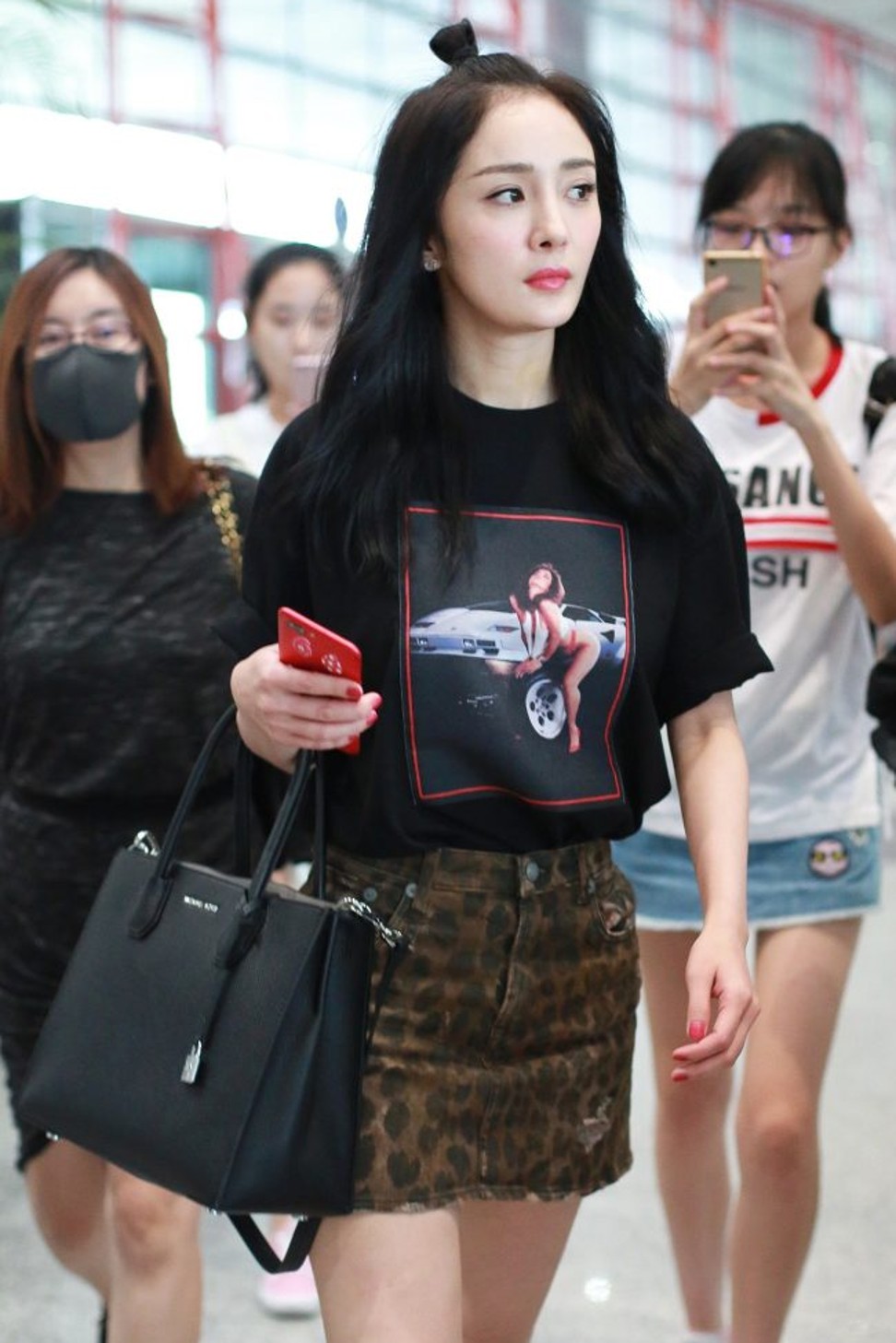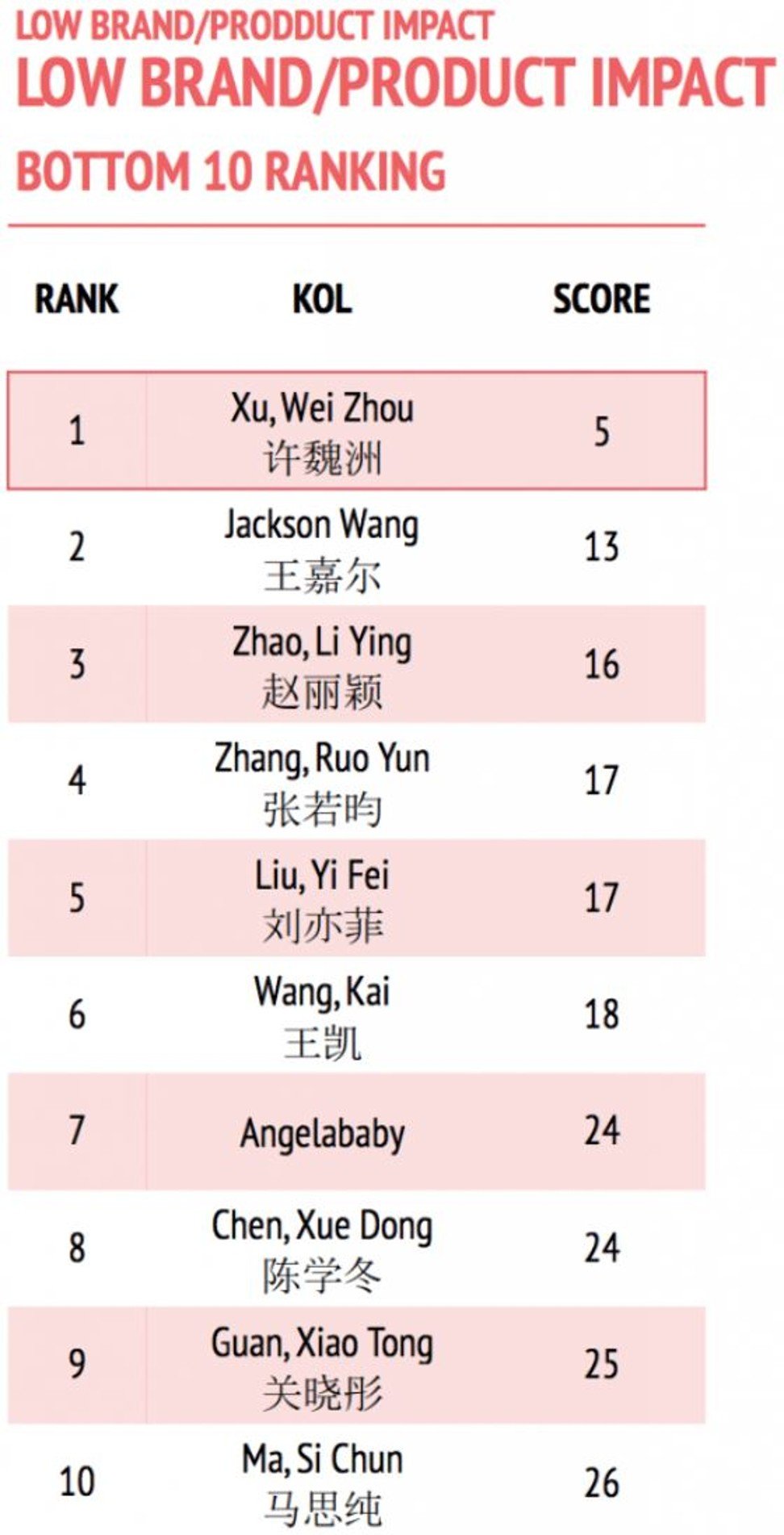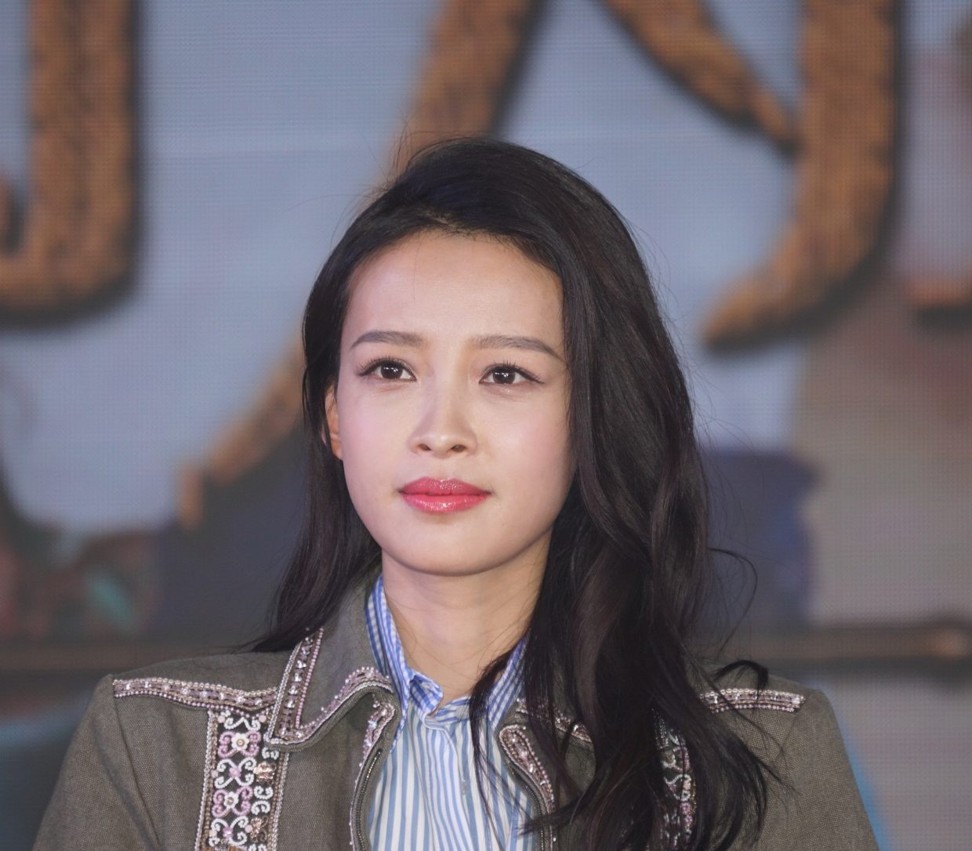Who are China’s top influencers and key opinion leaders by commercial value?

This article was written by Rachel Zheng and originally published in Jing Daily.
Are influencers and KOLs (key opinion leaders) effective promoters of brands or just of themselves? This is the question at the heart of a new study by Bomoda, a New York-based consumer intelligence company. In its 47-page report, “2017 Bomoda China Key Opinion Leader Index: Understanding Celebrity Influence”, it examines 400 Chinese celebrities active on various social media platforms in the first half of 2017, whittled down from a list of 40,000 of the most mentioned names on social media), to demystify the effect of KOLs and to try to determine what makes for good, bad, and high potential celebrity-brand collaborations.
“Ideally,” Bomoda CEO Brian Buchwald told Jing Daily in a phone interview, “a brand wants a celebrity who will have the positive effect of bringing their own direct audience with the added value of being highly photographed and picked up by third-party accounts”.
In today’s influencer-filled digital landscape, as brands see more success from working with self-made bloggers converting their own fan economy into influence with brands, the benchmark of commercial return has become higher, and many brands are reassessing their influencer strategy, wondering if costly traditional celebrity endorsements still work. And it’s not always easy to gauge the impact of celebrity endorsements. Some KOLs have a lot of buzz, according to Bomoda, but that doesn’t necessarily translate to brand awareness. On the other hand, some KOLs understand how to shape their fans’ perceptions of those brands.
In examining over 51 million Weibo posts, 2.3 billion related re-posts and comments, and over 2.4 million WeChat articles, Bomoda attempts to figure this out. The report is divided into two sections. In the first, it examines performance by social and commercial influence. Then it lists the top KOLs in five industries, such as activewear, consumer electronics, food and beverage, high-street fashion and luxury fashion. In the second section, it looks at KOLs with “high potential”, and, in the adverse, those with “low brand/product influence.”
Here are a few key takeaways from the report.
A celebrity’s commercial value must be measured against her social influence
The report looks at effectiveness through two lenses: social influence and commercial influence. The commercial value measures the KOL’s ability to persuade her fans to consider buying a brand’s products and the percentage of Daigou or third-party sellers who leverage the celebrity endorsement to attract purchases. In this list, Lu Han, the star of Louis Vuitton’s recent campaign for the launch of its smartwatch, came in first. Yang Yang (4), Yang Mi (5), and Kris Wu (6), were also in the top 10.
The report notes that it’s also important for the KOLs to be relevant to the industry and brands they’re touting. For high street fashion, Yang Mi was tops along with Fan Bingbing, Kris Wu, Edison Chen and Liu Wen.
Enter Yang Mi, the celebrity who brings a ‘compound effect’ to Michael Kors
Actress Yang Mi rose to the top of several lists including that of high street fashion, luxury fashion, and the cosmopolitan/fashionable image. Her success is guided, in part, by her ability to promote brands in her private as well as public life. As the brand ambassador for Michael Kors, she’s been seen in the brand’s clothing at glamorous events such as the Met Gala and film premieres, while also sporting the brand’s looks at the airport.
“Yang Mi was a successful case,” said Buchwald, “because she’s devoted to the brand both as part of her onscreen and off-screen life.” He said she brings a “compound effect” to the brand meaning that she communicates to her audience on her social media channels, but is also picked up by media, which will likely create significant potential viral value.
Consumers are more interested in a celebrity’s off-duty look, over their “official” glamorous looks, because their casual wear choices are personally made and they’re also more accessible. According to Bomoda, the fever for the celebrity off-duty look is also what laid the foundation for the emergence of the illegal Daigou shoppers and third-party sellers, who frequently leverage photos of celebrities’ off-duty looks to promote their own products on the gray market.
But while fans may favour these “off-duty” looks, there’s a dark side to this as well. “Celebrities commonly do not even oversee their social profiles,” Elijah Whaley, chief marketing officer of digital influencer platform ParkLu, told Jing Daily. When it comes to creating a sense of trust with consumers, he said self-made bloggers are much more effective. “Celebrities cannot be trusted to know what bag is great or what travel location is great because they are not experts on these topics.”
While Xu Weizhou is a ‘traffic king’, his massive fan base lacks purchasing power
At the opposite end of the spectrum are celebrities such as Xu Weizhou. Known as one of the popular pretty boys or China’s “little fresh meat”, the actor ranks number one for social influence. But when it comes to commercial value, he is ranked first among the bottom 10.
Because 99 per cent of the social media buzz by Xu’s fans is non-product or non-brand-related, according to Bomoda, this hurts his effectiveness as a commercial representative for a brand. Since the majority of his fans are teen girls, they lack purchasing power. Add to that the fact that he works with the highest of the high-end brands, including Louis Vuitton and Tiffany, which are out of reach for the majority of his fans.
“The combined impact of the lack of qualified buyers in his fan base, and that those fans do not seem to care about his endorsed brands but rather just his own celebrity,” said Buchwald, “leaves us dubious about the commercial value in working with him.”
There has been some speculation that brands could potentially benefit from his popularity with young fans down the road, seeing him as a long-term investment. But this argument also has its detractors.
“It’s a long shot to imagine that such collaboration will pay off in the long term,” said Chloe Reuter, founder of the Shanghai-based agency Reuter Communications. “Very few influencers have real and credible longevity.” Reuter further warned brands to take note of the short life cycle of social media hype. “Young fans will likely not be following the same KOLs in six months or a year from now.”
Also noteworthy is the inclusion on this list of Angelababy. When Dior first appointed her brand ambassador, critics had a field day on social media in China arguing that her controversial image wasn’t right for the storied and elegant brand. But then in a report issued just last month by RTG, Dior was named the top relevant brand for the Post-90s generation (or Generation Z). However, that report, which surveyed consumers in first-tier cities about how they perceive the relevance of international and domestic brands to their daily life, didn’t look at commercial impact.
Buchwald agreed that Dior is an incredibly relevant brand to young Chinese consumers but said it reflects on more than just one KOL relationship with Angelababy. “It ties back to the general quality and popularity of the brand,” he said, “and the work that they have done via WeChat and other social platforms to reach out to, build and now commercialise relationships with Generation Z.”
Actress Sun Yi is a high-potential KOL who could become the next Yang Mi
Considering the high cost of celebrities, brands are actively seeking high potential stars who can help boost their image, yet are not currently on everyone’s radar. According to Bomoda, this applies to both small brands with limited budgets as well as large brands who want to leverage a different tier of celebrity.
Another rising female celebrity who has the potential to become the next Yang Mi is 24-year-old actress Sun Yi. She gained her popularity from acting in the hit drama The Legend of Mi Yue. Similar to Yang, the actress is a natural fashion inspiration. Half of the social media content devoted to Sun focuses on her airport and editorial looks. The young actress is known for her chic style and refreshing image. For example, she appeared in Dior in a VogueMe editorial in April and was seen wearing Chanel in the tabloid OK! in March.
It is expected that in the highly competitive influencer landscape today, brands will aggressively reach out to KOLs and celebrities for first-hand collaborations while these young stars are ascending in their careers. But as per the report, these high potential male and female celebrities are only the tip of the iceberg for brands when it comes to exploring that opportunity.
Want more stories like this? Sign up here. Follow STYLE on Facebook, Instagram and Twitter

New report examines the effects of key opinion leaders to determine what makes for good, bad, and high potential celebrity-brand collaborations



